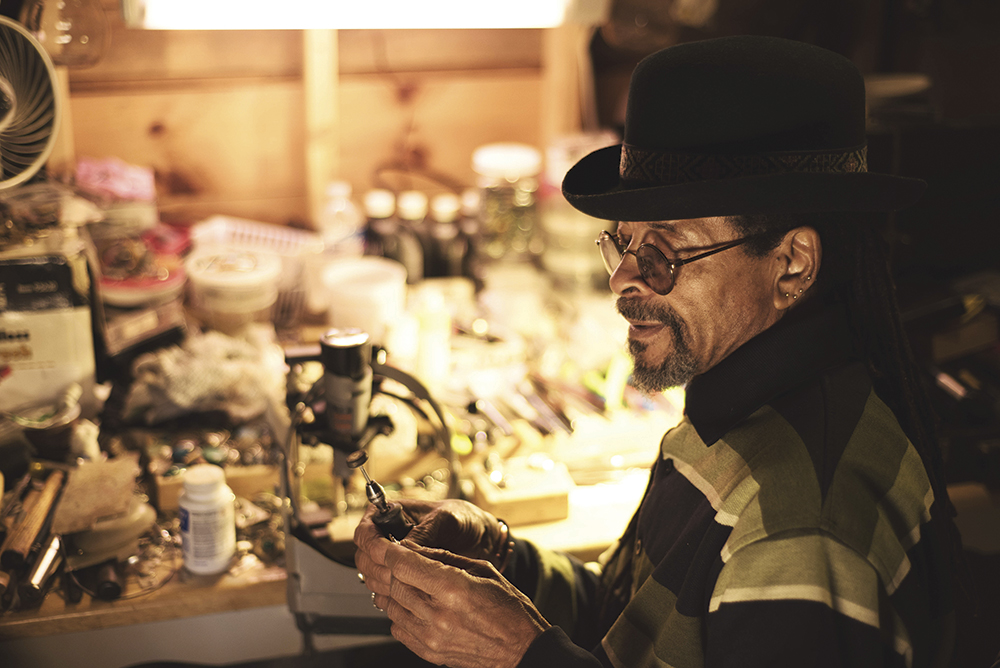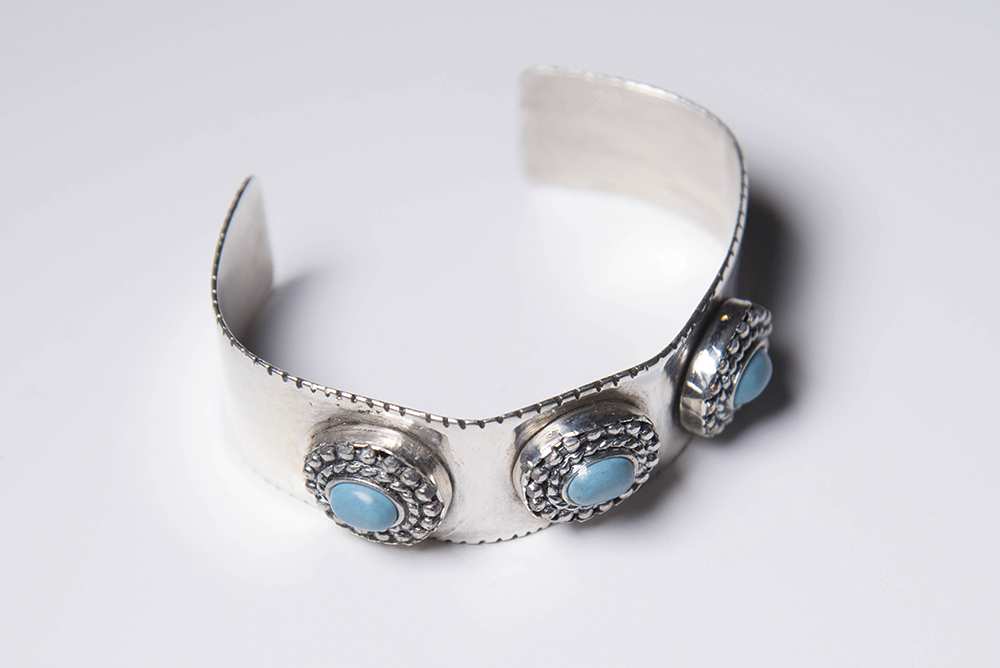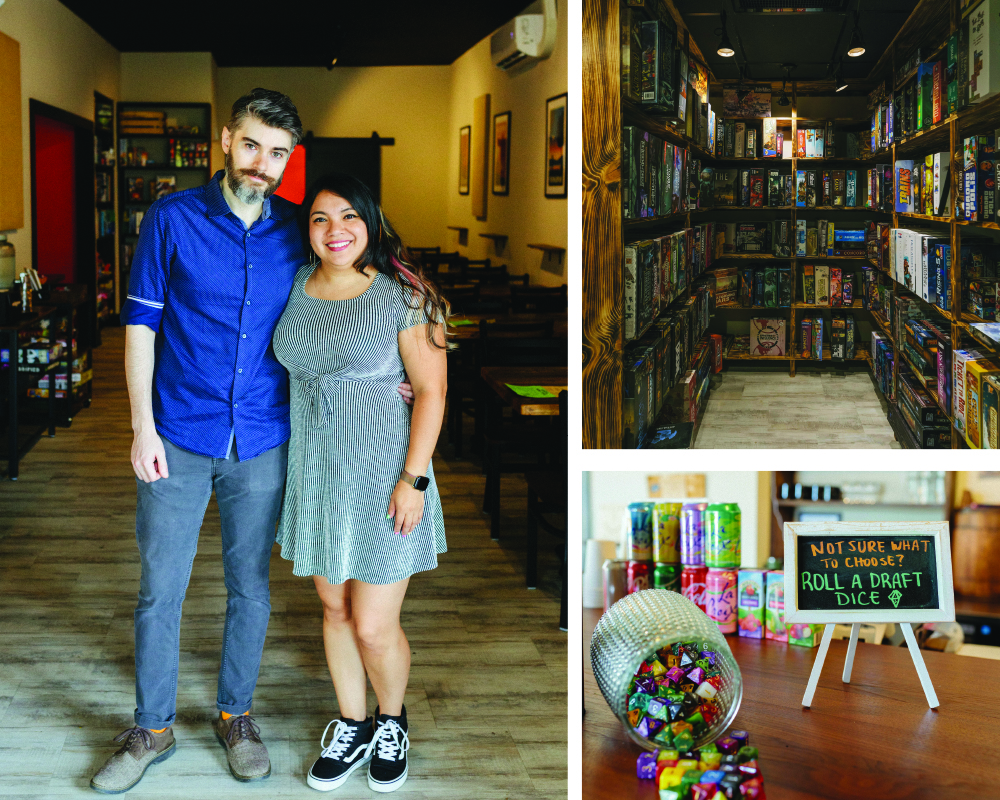
Jewelry artist James Artis working in his studio in the Seventh Avenue District. Photo by Rimas Zailskas.
There was a day some 20 years ago when James Artis thought he was going to die. It was in the mid-1990s in Somalia, where he had been deployed as a United Nations negotiator, part of the peacekeeping forces sent there to help rebuild the country after decades of ruinous tribal warfare. “I was traveling with seven other staff members from the compound we worked in to the airport compound, which was another work station for us,” Artis recalls. “We were, as usual, guarded by soldiers from the Nepalese Army, when we were ambushed by rebels. We all survived, but the Nepalese lost 17 [soldiers].”
Life is considerably calmer for Artis these days, given his retirement from the UN late in 2008, after 25 years of service in some of the world’s most dangerous trouble spots. There’s enough time now for him to enjoy a childhood talent he never had the leisure to pursue until moving to Hendersonville and setting up his studio, ArtisArts, on Locust Street, where he meticulously crafts elegant jewelry from colorful stones like onyx, amethyst, jade, and lapis lazuli.
“I create my own designs,” he notes.

Bracelet by James Artis.
In addition to the jewelry, Artis also designs pieces in leather and in stained glass — materials with which he’d been experimenting for some years. The leatherwork first appeared in a small shop Artis opened in New York City’s East Village, and caught on to such an extent that he wrote a beginner’s guide to making leather pieces that’s still a popular seller. “I’m presently writing an advanced guide,” he reveals. “Both the leather work and the stained glass are self-taught.”
Artis’ creative instincts came early. The son of a Navajo mother and a Haitian father, growing up on a family farm in rural Virginia surrounded by his mother’s extended family, “I was the youngest male in the family, and too young to work in the fields,” he says, “so I was always at the house with the women of the family. They did crafts like jewelry-making, quilting, knitting, and making handbags, usually from cotton material. I started tinkering with jewelry-making as a child.”
His diverse family background served him well, too, when a call came in 1980 from a friend who was working as a UN negotiator and who suggested he might be well suited as a member of the team, being dispatched to strife-torn Cyprus, where Turkish and Greek Cypriots had fought for control of the island during the 1960s. “During that war, many people went missing, and I was one of the investigators for the committee on missing persons tasked with finding clues as to what happened to them,” he explains. “We found mass graves, but after three-and-a-half years meeting with both sides, we found not one of those missing persons alive.” Missions to Israel, Angola, and Kosovo, as well as the near-disastrous one in Somalia, followed.
Somalia, he remembers, was like being under continual house arrest; and his mission’s work in Israel is still so sensitive that he is unable to speak about it.
A well-earned retirement came in 2008, after which he spent some time in South Africa, where he’d bought a house nine years earlier and where he met his wife, Vigie. “Meeting people from around the world and learning and understanding other cultures are the most memorable experiences I can share from my time with the United Nations,” he says.
Attracted by Asheville’s lively arts environment, but not caring for busy city life, Artis and Vigie chose Hendersonville as a smaller-scaled home base, from which the artist travels to art fairs like Asheville’s Art in the Park to show his creations. “I don’t work with precious stones or gold, other than repairs,” he notes — although his jewelry’s designs belie their modest components.
Even more, they capture some of Artis’ own tapestried heritage, drawn from so many different cultures, particularly relevant in the midst of contemporary polarization about immigration.
“I would have to say that back when my grandfather immigrated to this country from Haiti, he and people like him came with good intentions,” he remarks, “to work hard for a better life.”
James Artis’ studio, ArtisArts, is located at 801 Locust St. in Hendersonville and is open to visitors most days of the week. To contact James, call 828-407-3585 or e-mail him at jamesartis@hotmail.com. Also see his work on Facebook, and at ArtisArts on ETSY.




Hey James, nice exposure. Have happy holidays!